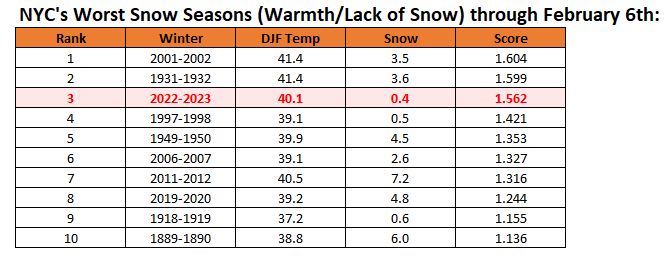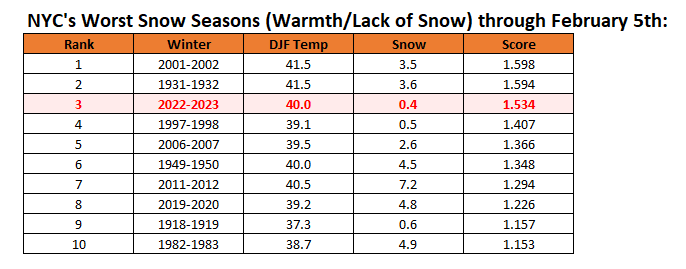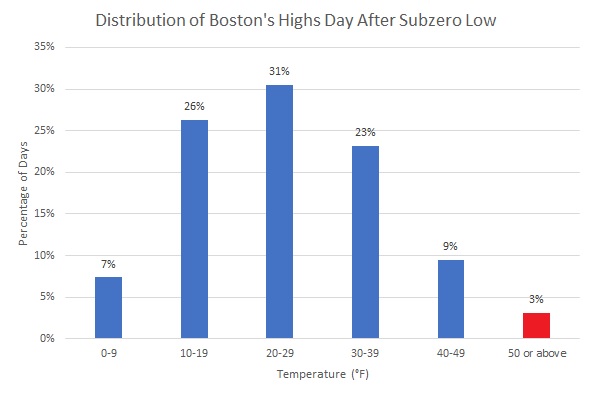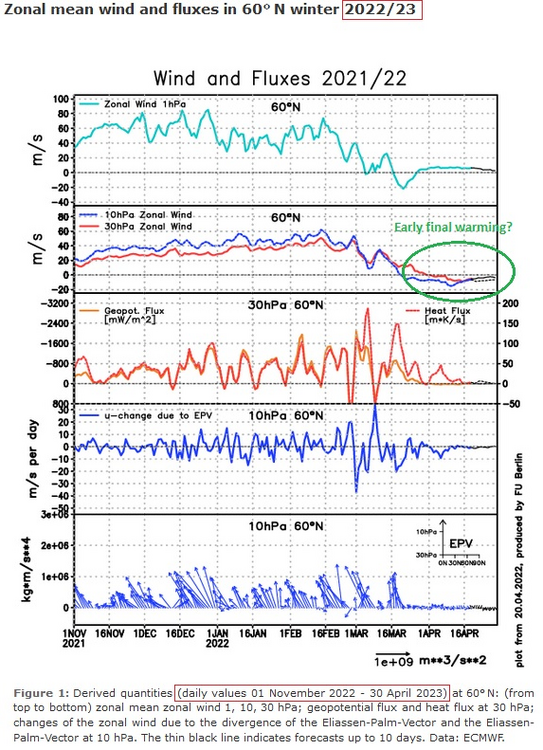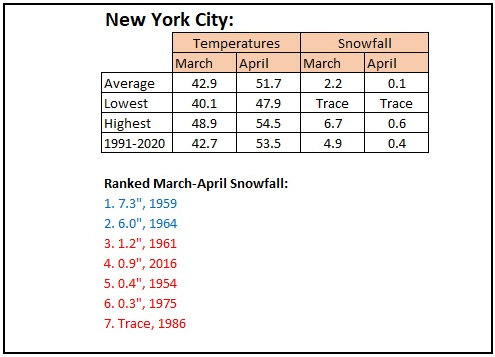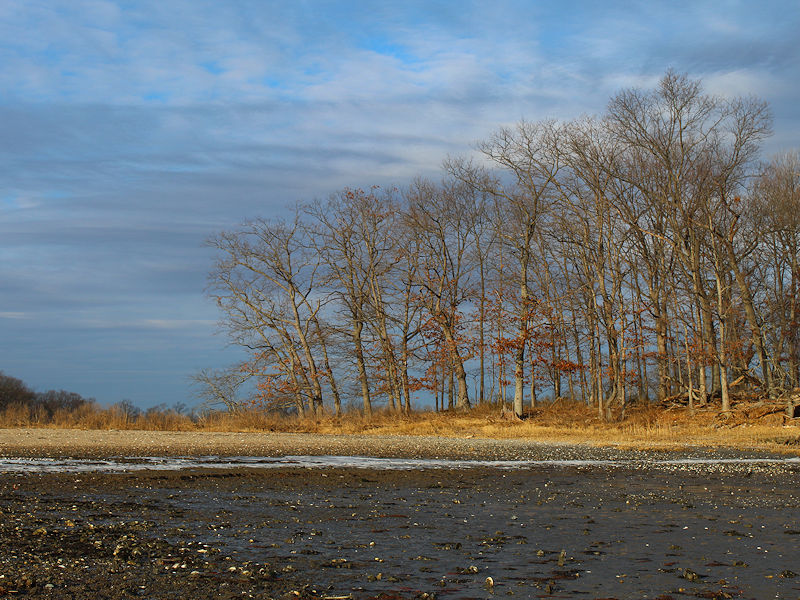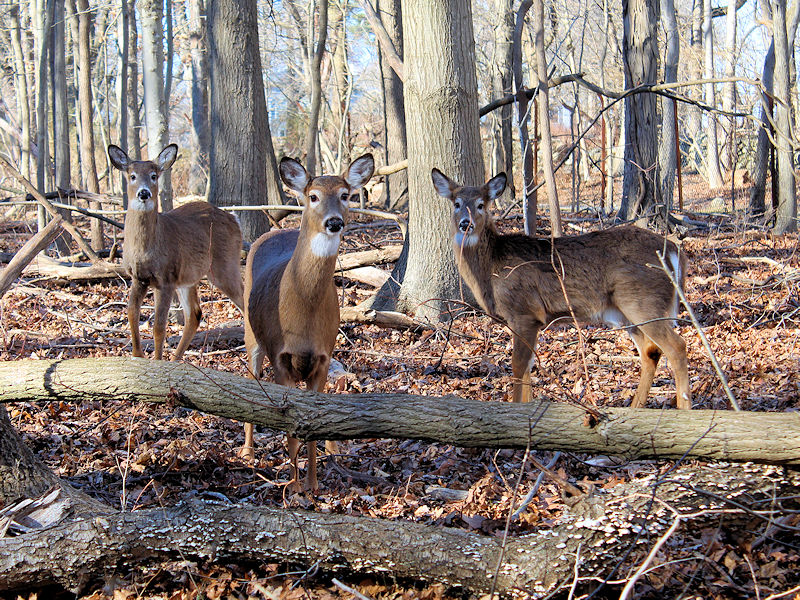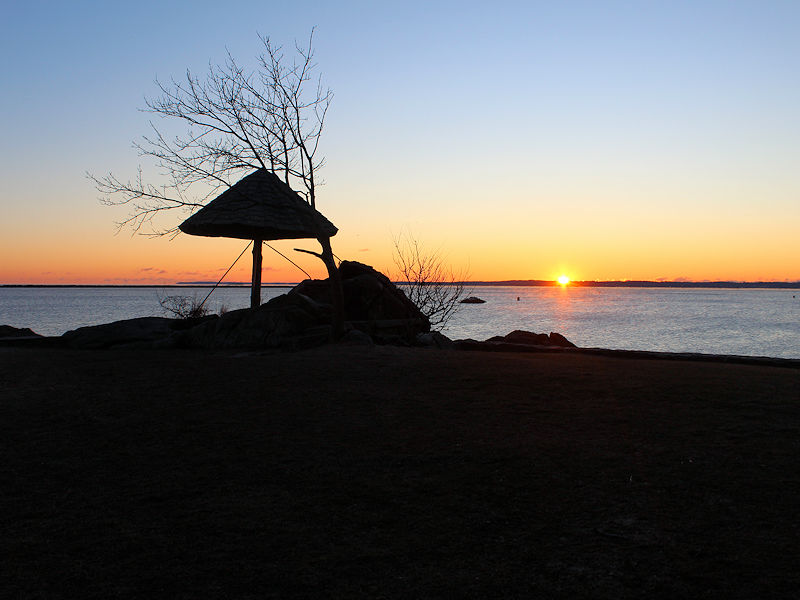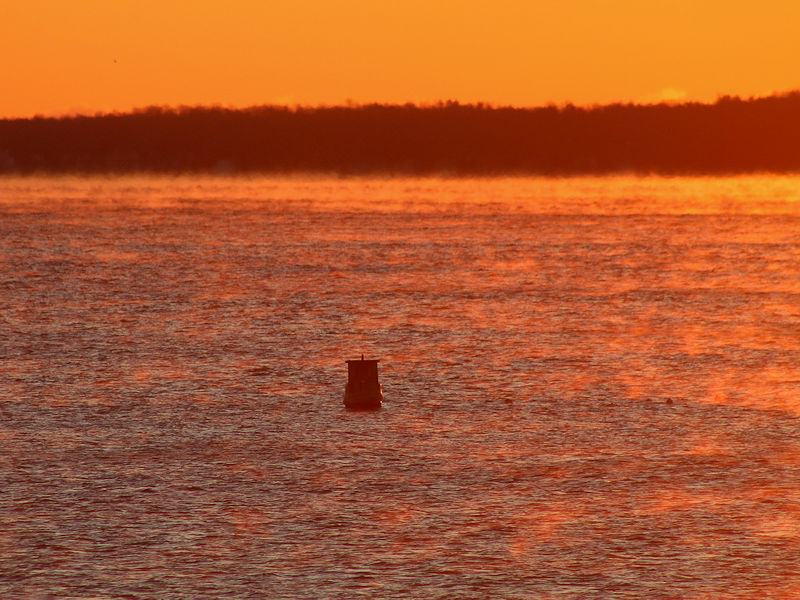-
Posts
22,981 -
Joined
Content Type
Profiles
Blogs
Forums
American Weather
Media Demo
Store
Gallery
Everything posted by donsutherland1
-
These are complex events. Much could go wrong. If the vortex splits, the larger piece could wind up in Eurasia. If there is no stratosphere-troposphere coupling, the desired colder outcome might not occur. I think we’ll have to wait to see how things actually evolve. I hope things work out.
-
Blustery winds are pushing a colder air mass into the region. Once again, as has been the theme this winter, the cold won't last long. Generally above normal and much above normal temperatures will continue into at least early next week. During the February 10-11 period, there is a chance that a storm could bring some frozen precipitation to interior areas. There remains a large amount of uncertainty. The potential exists for temperatures to run generally above to much above normal through mid-month. Both the CFSv2 and EPS weeklies show much above normal temperatures through the second week of February. Afterward, temperatures could cool during the closing 7-10 days of the month. There is disagreement among the ensembles about whether it will turn colder for a sustained period or just briefly. In terms of ENSO, the ENSO Region 1+2 anomaly went positive for the week centered around February 1st. That is the first positive reading since a +0.2 anomaly during the week centered around October 6, 2021. The ENSO Region 1+2 anomaly was +0.1°C and the Region 3.4 anomaly was -0.5°C for the week centered around February 1. For the past six weeks, the ENSO Region 1+2 anomaly has averaged -0.23°C and the ENSO Region 3.4 anomaly has averaged -0.65°C. La Niña conditions are beginning to fade and they should evolve to neutral conditions during late winter or early spring. The SOI was +10.81 today. The preliminary Arctic Oscillation (AO) was +1.602 today. On February 4 the MJO was in Phase 3 at an amplitude of 1.671 (RMM). The February 3-adjusted amplitude was 1.560 (RMM).
-
Yesterday's 61-degree rebound from Saturday's low temperature was the 3rd biggest such change on record for Boston.
-
Morning thoughts… Today will be partly sunny and mild. High temperatures will reach the upper 40s and lower 50s in most areas. Likely high temperatures around the region include: New York City (Central Park): 49° Newark: 51° Philadelphia: 51° It will be briefly cooler tomorrow before much milder air returns. Normals: New York City: 30-Year: 40.6°; 15-Year: 40.6° Newark: 30-Year: 41.2°; 15-Year: 41.4° Philadelphia: 30-Year: 42.4°; 15-Year: 42.4°
-
The short-lived Arctic blast is now a rapidly fading memory. Temperatures surged into the upper 40s and even lower 50s this afternoon. At Boston, the temperature soared to 51° following yesterday's -10° reading. That is the third 50° or warmer day following a -10° or below temperature. Those days are: December 21, 1875: 55° (December 20, 1875: -11°) December 21, 1875: 54° (December 20, 1884: -10°) February 5, 2023: 51° (February 4, 2023: -10°) Generally above normal and much above normal temperatures will continue into at least early next week. During the February 10-11 period, there is a chance that a storm could bring some frozen precipitation to interior areas. The potential exists for temperatures to run generally above to much above normal through mid-month. Both the CFSv2 and EPS weeklies show much above normal temperatures through the second week of February. Afterward, there is disagreement among the ensembles about whether it turns colder for a sustained period or just briefly. The ENSO Region 1+2 anomaly was -0.2°C and the Region 3.4 anomaly was -0.6°C for the week centered around January 25. For the past six weeks, the ENSO Region 1+2 anomaly has averaged -0.32°C and the ENSO Region 3.4 anomaly has averaged -0.70°C. La Niña conditions are beginning to fade and they should evolve to neutral conditions during late winter or early spring. The SOI was +16.57 today. The preliminary Arctic Oscillation (AO) was +0.087 today. On February 3 the MJO was in Phase 3 at an amplitude of 1.556 (RMM). The February 2-adjusted amplitude was 1.645 (RMM).
-
Final warnings usually occur March-May. The earliest was in 2016 (near the start of March). It’s too soon to be sure what lies ahead.
-
At 2 pm EST, Boston had a temperature of 50°. That comes a day after Boston's -10° temperature. This is the 3rd case on record where the temperature reached 50° or above following a low of -10° or below and 6th such temperature a day after a subzero low.
-
The Internet is again abuzz with long-range guidance showing a potential stratospheric warming event. What follows is speculation about a cold and possible snowy March. The usual caveats about model skill at extended ranges and the poorly-understood nature of such events applies. But if one looks at the excellent FU-Berlin site, one finds something that is not being mentioned. The long-range guidance isn't hinting at just an ordinary SSW event, but suggesting an early final warming event. Although there are erroneous date labels on the chart (showing 2021-2022 in places, the chart is for 2022-2023). From 1950-2020, there have been 7 early final stratospheric warming events (occurring prior to day 80 in the year): 1954, 1959, 1961, 1964, 1975, 1986, and 2016. The outcomes for March and April are mixed. 1975 had nationwide cold during March. 2016 had nationwide warmth during March. 1954 had near nationwide warmth during April. 1975 had near nationwide cold during April. For New York City, 5/7 (71%) had much below normal March-April two-month snowfall.
-
With no snow expected today, Winter 2022-2023 is just one of three winters will have seen less than 1" of snow through February 5th. Both prior winters had little or snowfall through all of February. Some other winters that ended January with less than 2.5" of snow wound up with snowy outcomes in February.
-
Yes, NYC was in the single digits on February 4-5, 1996.
-
Thanks. They were wary at first and even approached for a closer look at the camera.
-
The Northeast saw near record and record cold temperatures this morning, as a fierce Arctic air mass moved through the region. That air mass is now rapidly departing. Daily records included: Binghamton: -13° (old record: -4°, 1996) Boston: -10° (old record:-2°, 1886) Bridgeport: -4° (old record: 5°, 1955 and 1996) Hartford: -9° (old record: -8°, 1965) Montreal: -21° (old record: -20°, 1963) Mount Washington, NH: -47° (old record: -35°, 1963) ***new monthly and state monthly record*** New Haven: -3° (old record: 4°, 1963 and 2011) New York City-JFK: 4° (old record: 9°, 1955 nd 1996) New York City-LGA: 5° (old record: 10°, 1955, 1963, 1978 and 1996) Newark: 5° (old record: 7°, 1985 and 1996) Ottawa: -26° (old record: -22°, 1948) Providence: -9° (old record: -2°, 1918) Rivière-du-Loup, QC: -22° (old record: -19°, 1996) Quebec City: -25° (old record: -21°, 1996) Sherbrooke, QC: -24° (old record: -6°, 2009) Trois-Rivières, QC: -25° (old record: -20°, 1996) White Plains: 1° (old record: 4°, 1978) Worcester: -13° (old record: -4°, 1908, 1918, and 1934) Yarmouth, NS: -7° (old record: -2°, 1967) As had been the case during the December Arctic shot in a winter of almost unbroken warmth, the current Arctic shot responsible for the near record and record cold will be a fleeting one. The temperature will rocket toward normal levels and then above normal levels tomorrow. Above normal temperatures will continue through Friday. The potential exists for temperatures to run generally above to much above normal through mid-month. Both the CFSv2 and EPS weeklies show much above normal temperatures through the second week of February. A storm could impact the region during February 10-11 if some of the guidance is right. The ENSO Region 1+2 anomaly was -0.2°C and the Region 3.4 anomaly was -0.6°C for the week centered around January 25. For the past six weeks, the ENSO Region 1+2 anomaly has averaged -0.32°C and the ENSO Region 3.4 anomaly has averaged -0.70°C. La Niña conditions are beginning to fade and they should evolve to neutral conditions during late winter or early spring. The SOI was +19.41 today. The preliminary Arctic Oscillation (AO) was -0.463 today. On February 2 the MJO was in Phase 3 at an amplitude of 1.644 (RMM). The February 1-adjusted amplitude was 1.666 (RMM).
-
I hope we can get some snow.
-
As milder air pressed northward into a rapidly retreating Arctic air mass, the sky was filled with high and mid-level clouds. The mercury slowly clawed its way back from the single digits, climbing through the teens, and into the 20s. Two photos.
-
I suspect that it will grow cooler for a time, but I doubt that there will be single digit cold again.
-
With single-digit days becoming increasingly uncommon in New York City, the average interval between the first and last such day during a season has declined. Winter 2022-23's interval of 43 days (assuming today will be the last such day this season) is the largest since Winter 2014-15 when the interval was 48 days.
-

The event of the season - 2 days of hell!
donsutherland1 replied to Go Kart Mozart's topic in New England
It was truly a once-in-a-generation or longer event in Boston. -

The event of the season - 2 days of hell!
donsutherland1 replied to Go Kart Mozart's topic in New England
Yes, that is true. Today was really impressive. -

The event of the season - 2 days of hell!
donsutherland1 replied to Go Kart Mozart's topic in New England
-
Yes. The full hourly data for the observed -28° wind chill: January 21, 1985 9 am: Temperature: -2° Winds: 29 mph Gusts: 37 mph
-
Morning thoughts… Near record and record cold readings will give way to a less harsh, but still cold afternoon. High temperatures will reach the middle and upper 20s in most of the region. Likely high temperatures around the region include: New York City (Central Park): 25° Newark: 26° Philadelphia: 30° It will turn much milder tomorrow. Normals: New York City: 30-Year: 40.3°; 15-Year: 40.5° Newark: 30-Year: 40.9°; 15-Year: 41.1° Philadelphia: 30-Year: 42.1°; 15-Year: 42.1°


